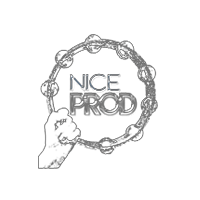ABOUT THE VELVET UNDERGROUND EXPERIENCE
1. Welcome to America
After World War II, America’s consumer machine rebooted and ran like never before: an obedient, family-oriented standard of life, as picture-perfect as the images circulated in the booming media. Inflammatory intellectuals and artists, who rejected all the fake smiles, were rife. They condemned the rigidity of a supposedly liberal society in which all deviance was deemed to be dangerous. Initially marginalized, these unclassifiable individuals would use, invent and fuse all forms of creation. They defended radically different ways of life, took alternative paths, refused rules and taboos. All this was embodied in the indefatigable figurehead of the Beat Generation poets, Allen Ginsberg.
2. Lou Reed & John Cale, The Childhood of Art
It’s difficult to imagine two more different personalities and trajectories than those of the founding members of the Velvet Underground. Before they met, John Cale and Lou Reed had nothing or almost nothing in common. The first of the two, born on 9 March 1942, came from a working-class, family in Wales. Encouraged by his parents and, thanks to his gift for music, he followed an academic curriculum, which might have made him destined to conduct an orchestra with a baton. The second of the two, born a week earlier on 2 March 1942 in Brooklyn, came from a middle-class New York Jewish family. Lou Reed very quickly went off the rails, laying bare a fragile temperament, ill-adapted to the small-town mentality of the suburb of Freeport where he grew up. The only thing the two had in common: a fascination for the rock’n’roll that was emerging and a clear penchant for extreme experiences.
3. New York Spirit
In the eyes of the United States’ heartland, New York has always been a huge Babylon, the foothold of a cosmopolitan life incompatible with the founding values of small-town America. At the start of the 1960s, in this city hit by recession and social crisis, no neighbourhood was as dubious as Greenwich Village, to the south of Manhattan – the stomping ground of idle students, impious artists and intellectuals with pernicious ideas. Repulsion and fascination went hand in hand: a decadent hell in the eyes of most, the Village was the promised land for others, an amazing breeding ground for talent. This was where experimental musicians, underground filmmakers, taboo-busting poets and young people challenging the diktats of the heterosexual norm all converged. In this unique context, the verses of the Beat poets the audacious harmonics of La Monte Young and the experimentation of underground cinema would rub off on Lou Reed and John Cale before they brought the Velvet Underground to life. At the intersection of pop culture and the avant-garde, conceptual art and tribal beats, juvenile shenanigans and the most sophisticated of theories.
4. The Factory years
The Velvet Underground hadn’t waited for Andy Warhol in order to forge its own sound, a world and an identity that broke so radically with the rock’n’roll canons of the time. Its poetry broached sex, drugs and existential questions head-on, and was set to music that was both schizophrenic and fluid, sombre and luminous, with paradoxes and extravagances that forced its audience to become involved and choose sides. Fascinated by this singular image, the nascent prince of pop art welcomed the band into his studio loft, the Factory. This hotbed of talent and extravagance, accelerator of not so elementary particles, propelled the Velvet Underground into the limelight.
5. Reinventions of the Velvet Underground
After Nico’s eviction, followed by Warhol’s and then John Cale’s, the band that you might have taken for dead, took on a new form. Now the only leader on board, Lou Reed found introspection to be an infinite source of inspiration. He found a double by hiring a multi-instrumentalist, Doug Yule, who was able to reproduce his phrasing. Calmer than before, the Velvet Underground zigzagged across America but snubbed New York, where the band would not perform between Spring ’67 and Summer ’70. In the nightclubs of Boston, Chicago, Philadelphia or the East Coast, audiences marvelled at its mixture of smoothness, sensuality and mischief. The posthumous album released in ’74, 1969 Velvet Underground Live, bears witness to this and launched underground music’s fame.
6. Hecho & Heritage
Lou Reed’s departure in August 1970, marked the end of the real Velvet Underground, but this went more or less unnoticed. Two years later, the band’s name was on everyone’s lips: commended by the man of the moment, David Bowie, the band’s influence would only greaten. Through pirate records, the release of previously unreleased material and the mea culpa of journalists who now raved about the Velvet Underground, the spirit and range of New York rock steadily won over the entire planet, like a revenge from beyond the grave. Far from being limited to just the musical sphere, the Velvet Underground’s waves washed over art, photography, cinema and fashion: the band continued to inspire or amuse pop and rock culture in its entirety.
This exhibition has been created with the invaluable help of Gerard Malanga, Jonas Mekas & Benn Northover, Esther Robinson, MM Serra, Merrill Reed Weiner, Olivier Landemaine, Allan Rothschild, Bruno Juffin, Gery Bouchez & NOD productions











